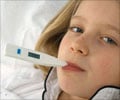A new guideline developed by the American Academy of Neurology and the Child Neurology Society aims to help physicians diagnose the causes of status epilepticus, a state of continuous seizures, in children, many of whom have epilepsy. The guideline is published in the November 14, 2006, issue of Neurology, the scientific journal of the American Academy of Neurology.
Status epilepticus is the medical term for a seizure, or series of seizures, that lasts more than 30 minutes. It includes two or more continuous seizures if there is not full recovery of consciousness in between. Status epilepticus is a life-threatening emergency that requires hospital evaluation and treatment for control. Status epilepticus annually affects an estimated 31,600 children under the age of 18 in the United States. It is most common in infants and toddlers.To develop the guideline, the authors reviewed the major available scientific studies on the topic.
The guideline recommends physicians consider anti-epileptic drug (AED) levels when a child with treated epilepsy develops status epilepticus.
“If a child with epilepsy has continuous seizures, it is possible that AED levels are low, because of inadequate dosing, non-compliance or withdrawal of the AED,” said lead author James Riviello, MD, with Children’s Hospital and Harvard Medical School in Boston, Massachusetts, and a member of the American Academy of Neurology and Child Neurology Society. “Data show low AED levels in 32 percent of children who develop status epilepticus, but this may not necessarily have caused the status epilepticus.”
The guideline also recommends an EEG, a test of electrical activity of the brain, be considered in a child with status epilepticus. “An EEG may be helpful in determining whether there are generalized or focal abnormalities or when there is suspicion that the continuous seizures are non-epileptic,” said Riviello.
According to the guideline, physicians should also consider infectious, toxicology and metabolic studies in children with status epilepticus when there are clinical indicators for concern or when the initial evaluation doesn’t reveal the cause of the continuous seizures. Neuroimaging may also be considered, after the child with status epilepticus is stabilized, if there are clinical indications or if the cause of the seizures is unknown.
Advertisement
SRM







